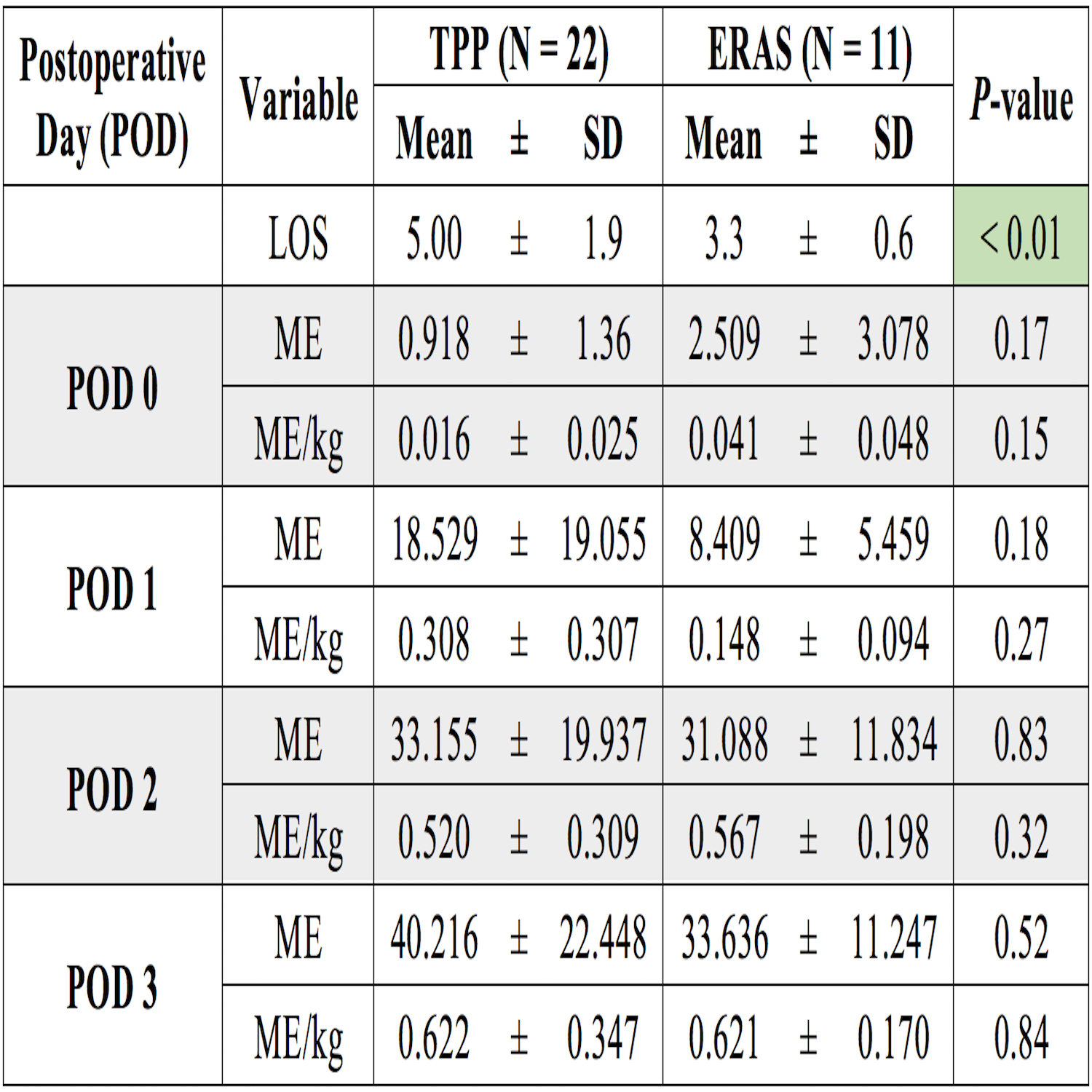NM-281
Novel ERAS pathway significantly reduces LOS in adolescent idiopathic scoliosis patients undergoing posterior spinal fusion
1Spisak K, 1Albert M, 1Jones A, 2Froehle A, 1Brown L, 3Sirois Z, 3Thomas M, 1Clark J
1Dayton Children's Hospital, Dayton, Ohio, USA; 2Wright State University, Boonshoft School of Medicine, Dayton, Ohio, USA; 3Wright State University, Dayton, Ohio, USA
Patients undergoing posterior spinal fusion (PSF) for adolescent idiopathic scoliosis (AIS) have historically been hospitalized for 5-6 days (1). Recent studies suggest that enhanced recovery after surgery (ERAS) protocols decrease length of stay (LOS) and reduce opioid usage (2). We recently implemented a novel ERAS protocol for the management of PSF on patients with AIS. This study compares patients’ LOS and opioid requirements between our traditional pain pathway (TPP) and ERAS pathways.
We performed a retrospective analysis comparing traditional and ERAS pathways, assessing post-operative LOS and opioid usage. Administered by the orthopaedic team, the TPP included intra-operative intrathecal morphine and variable postoperative pain medications. The ERAS pathway included four total doses of IV methadone, hydromorphone patient controlled analgesia (PCA), scheduled methocarbamol, acetaminophen, ketorolac, ondansetron, and management by the Acute Pain Service. Data was collected from all AIS patients undergoing PSF performed by two orthopaedic surgeons between December 2013 and September 2017. Patients were excluded if they weighed less than 40 kilograms or had significant comorbidities.
There were 22 patients in the TPP group and 11 in the ERAS group. Hospital length of stay was significantly shorter in the ERAS group, by an average of 1.7 days compared to the TPP group (3.3 ± 0.6 vs. 5.0 ± 1.9 days, respectively; p < 0.01). Between the two groups, there were no significant differences in opioid consumption (morphine equivalents/kg/day) on postoperative days 0 (p = 0.15), 1 (p = 0.27), 2 (p = 0.32) or 3 (p = 0.84).
LOS serves as a surrogate for achievement of postoperative milestones, indicating satisfactory pain control and functional recovery. Additionally, a shorter LOS is associated with cost savings and reduced patient morbidity. In our study, the significant decrease in LOS suggests that our ERAS protocol provides comparable quality of postoperative care while expediting patients’ hospital discharge. We conclude from our preliminary findings that our ERAS pathway benefits our patients by decreasing LOS with no difference in post-operative opioid requirements.
The literature has indicated the value of evidenced-based algorithms and expedited pain management protocols when applied to AIS PSF, but comparative evidence of independent pathways usage remains understudied. The preliminary results of this study provide additional insight while demonstrating an effective ERAS pathway.
1. Erickson MA, Morrato EH, Campagna EJ, Elise B, Miller NH, Kempe A. Variability in spinal surgery outcomes among children's hospitals in the united states. J Pediatr Orthop. 2013 Jan;33(1):80-90.
2. Gornitzky AL, Flynn JM, Muhly WT, Sankar WN. A rapid recovery pathway for adolescent idiopathic scoliosis that improves pain control and reduces time to inpatient recovery after posterior spinal fusion. Spine Deform. 2016 Jul;4(4):288-95.
Top












